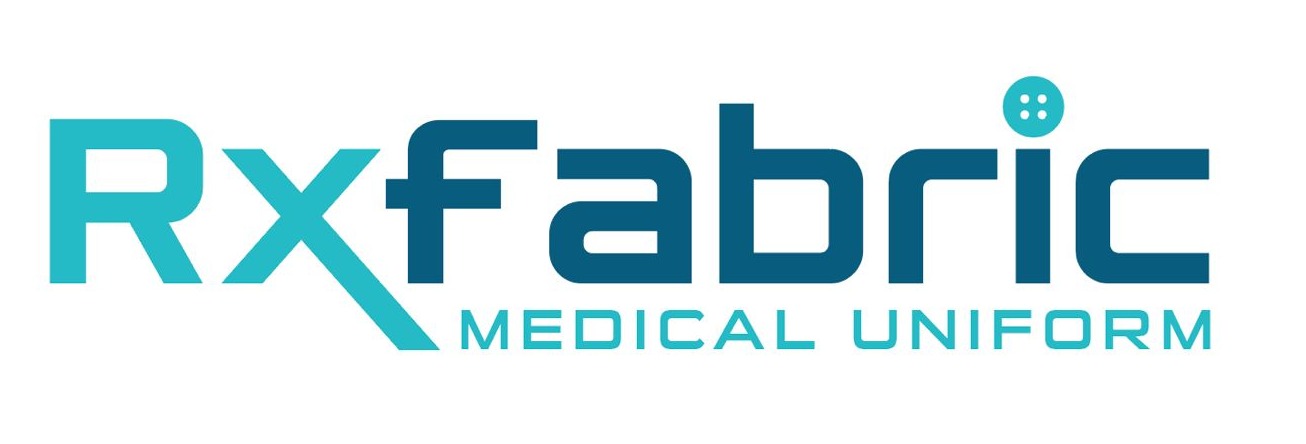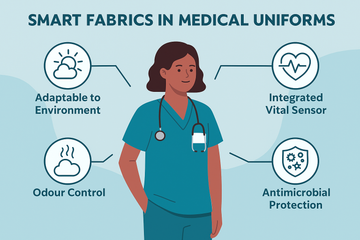Smart Fabrics in Medical Uniforms: How Technology is Changing Scrubs
Introduction
For decades, medical uniforms remained almost unchanged—basic designs, plain colors, and standard cotton fabrics. While healthcare technology advanced rapidly, the uniforms worn by doctors, nurses, and other frontline staff lagged behind. But that’s no longer the case. Smart fabrics are revolutionizing medical apparel, offering not just comfort and durability but also improved safety and performance.
In this blog, we’ll explore what smart fabrics are, the latest innovations in medical uniforms, and how they are reshaping the future of healthcare clothing.
What Are Smart Fabrics?
Smart fabrics (also known as “functional textiles”) are materials engineered with advanced properties to perform beyond traditional fabrics. In medical uniforms, this means scrubs and gowns that don’t just look good but actively fight germs, manage moisture, and enhance comfort.
Examples include:
• Antimicrobial fabrics that reduce bacterial growth.
• Moisture-wicking textiles that keep healthcare workers cool during long shifts.
• Stretchable blends that allow ease of movement.
• Temperature-regulating materials that adapt to hospital environments.
Key Innovations in Medical Uniform Fabrics
1. Antimicrobial Technology
• Fabrics infused with silver ions or similar compounds fight against bacteria and viruses.
• Helps reduce hospital-acquired infections (HAIs).
• Keeps scrubs fresher for longer periods.
2. Moisture-Wicking & Breathable Materials
• Similar to sportswear fabrics, these draw sweat away from the skin.
• Maintain comfort even during 12+ hour shifts.
3. Temperature-Regulating Textiles
• Adaptive fabrics adjust to hot or cold conditions.
• Prevent overheating under layers of protective gear.
4. RFID & Tracking Integration
• Some hospitals are experimenting with uniforms embedded with RFID chips.
• Helps track laundry cycles, prevent loss, and manage inventory.
Benefits for Healthcare Professionals
• Improved Hygiene – Antimicrobial fabrics lower infection risks.
• Enhanced Comfort – Breathable, stretch fabrics reduce fatigue.
• Cost Efficiency – Longer-lasting uniforms reduce replacement frequency.
• Professional Appearance – Fabrics retain color and structure even after multiple washes.
Future Outlook of Smart Fabrics in Healthcare
The next wave of innovation could bring:
• Wearable tech integration – scrubs that track heart rate, oxygen levels, or stress indicators.
• Self-cleaning fabrics – uniforms that repel stains and sterilize themselves.
• AI-enabled fabrics – analyzing sweat or temperature changes to alert medical staff about dehydration or fatigue.
Conclusion
Smart fabrics are no longer a futuristic idea—they’re reshaping the present of medical uniforms. From antimicrobial protection to RFID-enabled inventory management, these innovations are making healthcare safer and more efficient.
At RxFabric™, we believe that the people caring for others deserve the very best. That’s why our uniforms are designed with next-gen fabrics that combine function, comfort, and durability—ensuring healthcare heroes stay protected while looking professional.
👉 Explore our collection today and step into the future of medical uniforms.






